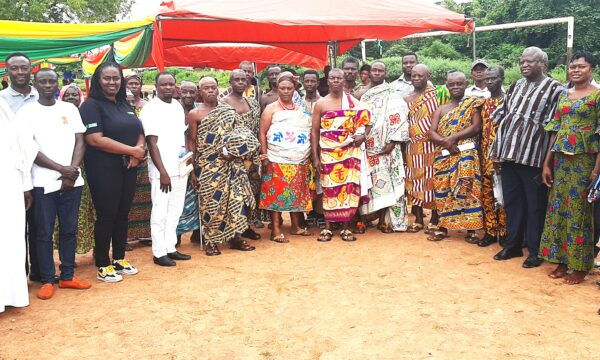
Millet grains can be analysed for nutritional content using X-ray fluorescence © ICRISAT HOPE/Peter Casier (CC BY-NC-SA 2.0 license)
Farmers face difficult challenges in deciding which crop variety to continue growing. They need to choose crop varieties that have a high likelihood of survival and that will have a high yield. The communities that these farmers provide crops for also have needs. Their need is focused on the access to nutritious crops that contain high concentrations of minerals such as zinc and iron. It is easy for farmers to see which crop varieties with the largest vegetative organs and those that survive longest, but how do farmers discover which crops are the most nutritious? They can’t simply look at each plant to find their nutritional content. Now agricultural scientists believe that they may have solved this problem by using X-Ray Fluorescence technology to analyse crop seeds.
Agricultural researchers have adapted mining technology to analyse the mineral content in the seeds of beans and pearl millet in Rwanda. They’re using X-Ray Fluorescence to detect iron and zinc concentrations in these common crops in the hope of producing more nutritious crops. They are able to compare nutritional levels in new varieties of these crops. The most nutritious varieties can then be cultivated further by farmers, with less nutritious varieties discarded.
This is important as deficiencies in iron or zinc have detrimental effects on physical and mental health in humans. Iron deficiency inhibits childhood development and can increase the risk of deaths in childbirth. It’s hard to distinguish the effect of zinc deficiencies on people in the developing world, as normally people there suffer from multiple mineral deficiencies. However, zinc supplementation has been found to reduce diarrhoea incidences and their severity, and significantly reduce the prevalence of pneumonia.
Over 2 billion people are affected worldwide by mineral deficiencies in their diets that are also referred to as ‘hidden hunger’. It is hoped that this X-Ray Fluorescence technology will reduce malnourishment by helping farmers to select the most nutritious crop varieties available to them.
X-Ray Fluorescence costs only 15 US cents compared to US $20 for other analytical techniques such as traditional inductively plasma-based methods. The technology also yields results quicker, meaning that more crop varieties can be tested than before and that farmers will have access to these results sooner. X-Ray Fluorescence doesn’t destroy the seed samples and little training is needed to operate the technology. A recent paper compared X-Ray Fluorescence with inductively plasma-based methods and found that there were few differences between the results.
This new cheap and more rapid method produces accurate results and, with only basic training needed, can make a huge difference to farmers in the developing world.
1 Comment
Leave a Reply
Related News & Blogs
How do pest risk registers address the spread of plant pests in Africa?
Pest risk registers can help to solve problems in agriculture, addressing the growing global threat of plant pests. Moreover, changing weather patterns, led by rising temperatures, are causing them to reproduce faster and expand into new regions. In ad…
10 July 2025





Reblogged this on INNOVATING AGRIBUSINESS.